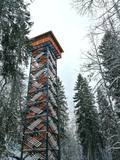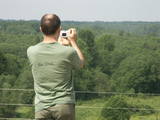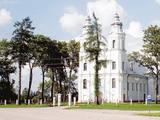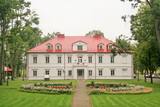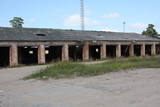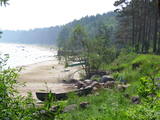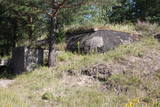| Nr | Nosaukums | Apraksts |
|---|---|---|
|
This part of the Forest Trail gives an opportunity to see Setomaa or “the Land of Setos” which is inhabited by Setos – an ethnographic group with specific ancient traditions and a unique language dialect. Forest Trail hikers can visit the traditional Setos homestead and enjoy Setos cuisine. The forests of the region are especially charming in early autumn, when the ground is coloured lilac by the blooming heather. There is a good chance to pick wild mushrooms and berries. One of the most beautiful sections of this trail in Setomaa leads along the River Piusa, where the river is surrounded by sandstone outcrops. You will also visit the Piusa caves. The tour will end in Värska resort – with its sanatorium and SPA, which use the strengths of local nature: mineral water and lake mud. Värska mineral water is well known in Estonia and elsewhere. |
||
|
From Riga airport the tour goes straight into countryside to Jaunmoku manor, surrounded by an attractive park. Next day, birding starts at Ķemeri National Park, including wet-forest areas and locations around Lake Kaņieris and Ķemeri village. Then the route follows the west coastof the Gulf of Riga with some small stops along the way and longer walks at Mērsrags. Next you spend some time at Cape Kolka and its surroundings which is a prime migration spot. Visitthebroad-leafforests of Slītere National Park around the ancient coast of the Baltic Ice Lake and drive through Užava floodplain fields, then stop at the westernmost point in the country, Akmeņrags. The tour continues to Liepaja and Pape Ornithological Station and lake where it is possible to spend a night watching the owl migration if it has started. Then we drive through Zvārte wooded area and make some stops at fish ponds on the way back to Riga. |
||
|
Atrodas starp Kr. Valdemāra un Kuršu ielām. Viena no iespaidīgākajām un greznākajām pilsētas celtnēm, kas būvēta neoromantikas formās. 19. gs. beigās katoļu draudze nevarēja saņemt atļauju jauna dievnama celtniecībai, tādēļ uz vecās ēkas uzbūvēja jaunu, kur vecā baznīca tapa par lielākās ēkas sānu kapelu. Baznīcas sienas un koka griestus rotā attēli ar Bībeles sižetiem. Dievmātes kapelā saglabājies mazās baznīcas (no 18. gs.) centrālais altāris. Baznīcas griestos ir iekārts burinieka modelis, ko dāvinājuši vētras laikā izglābušies jūrnieki. |
||
|
Dabas liegumā "Lielie Kangari" atrodas 33 metrus augsts skatu tornis, kura virsotnē atrodas platforma, no kuras paveras skats uz Kangaru ezeru un Lielkangaru purvu. Dabas liegumā izbūvēta arī nepilnu divu kilometru gara pastaigu taka ar tiltiņiem un skatu platformu pie ezera. Takas sākumā izvietotais veselības maršruts ikvienu apmeklētāju aicina kārtīgi izvingroties un izkustēties. Apmeklētāju informēšanai un izglītošanai visas takas garumā izvietoti arī informatīvie stendi ar fotogrāfijām, kas apvieno varenu stāstu un teiku kopumu par notikumiem, vietām, tēliem un parādībām dažādās apkārtnes vietās. |
||
|
Rokdarbniece Vineta Meistere piedāvā apskatīt, pasūtīt un nopirkt gleznas, dienasgrāmatas un recepšu grāmatas, kas izšūtas krustdūriena tehnikā. |
||
|
Zvārdes mežu masīvs atrodas teritorijā, kur PSRS laikā bija izveidots Padomju armijas aviācijas poligons. Līdz ar to poligona teritorija bija neapdzīvota un civilpersonām nepieejama. Plašie mežu masīvi, to daudzveidība (boreālie meži, melnalšņu staignāji u.c.) un militārās teritorijas statuss bija viens no iemesliem, kādēļ Zvārdes meži ir ļoti nozīmīga daudzu retu un aizsargājamu putnu sugu dzīves, vairošanās un barošanās vieta. Zvārdes poligonā līdz mūsdienām saglabājies unikāls kurgāns – poligona novērošanas vieta. Vērts apskatīt arī atsevišķus kultūrvēstures objektus, kas saglabājušies poligonā pēc aviācijas uzlidojumiem. Apmeklējot teritoriju, ieteicams pārvietoties pa vispārējās lietošanas ceļiem. |
||
|
Bērzgales Sv. Annas Romas katoļu baznīca uzbūvēta 1770. gadā
un 1776. gadā iesvētīta svētās Annas godam. Celta renesanses baroka
stilā ar kokgriezumiem rotātu altāri un divām Jaunavas Marijas altārgleznām. Ārēji baznīca līdzinās Aglonas bazilikai.
|
||
|
Skaista sena parka apjoztā, nesen rekonstruētā, 19.gs. vidu atgādinošā muiža atrodas ziemeļu Lietuvā, 14 km no Paņevežiem. Bistrampolio muižas saimniecība izveidota 19.gs. otrajā pusē – 20.gs. uzbūvētas ēkas: klasicisma stila divstāvu muiža (19.gs. vidus), zirgu staļļi, pagrabi, dārznieku nams, saimniecības ēkas. Muižas saimniecību grezno 19.gs. otrajā pusē iekoptais jauktā tipa parks ar dīķiem. Muižas parkā uz Birtues kalna gozēja ievērojama lapene, blakus dārznieka namiņš. Parka siluetu atdzīvina no jauna bruģētās taciņas un dīķus savienojošie tiltiņi. |
||
|
Ķeguma hidroelektrostacija – sākums mērķtiecīgi iecerētai valsts vienotai elektroapgādei. Ķeguma HES ir lielākā un modernākā hidrotehniskā būve Baltijas reģionā 20. gadsimta 1. pusē. Tās celtniecībā (1936 – 1939) strādā vairāk nekā 4000 Latvijas iedzīvotāju. Pirmo hidroagregātu iedarbina 1939. gada 15. oktobrī un ieslēdz elektrolīniju Ķegums-Rīga. Projektā paredzēti četri hidroagregāti ar kopējo jaudu 70 MW. No 1975. gada līdz 1979. gadam norit Ķeguma HES paplašināšana, tiek izbūvēta jaunu ražotne – Ķeguma HES-2 Daugavas kreisajā krastā. Stacijas jauda palielinās līdz 260 MW. Enerģētikas muzejs atrodas Daugavas kreisajā krastā Ķeguma HES teritorijā. Muzejā ikviens interesents – no zinātkāra bērna līdz nozares ekspertam – var smelties jaunas zināšanas par Latvijas enerģētikas vēsturi un attīstību. Muzeja darba laiks: otrd. - piekt. 9.00 – 15.00; sest. 9.00 - 17.00 Lūdzam pieteikties vismaz 2 dienas pirms plānotā apmeklējuma! |
||
|
Padomju gados Ventspils tanku daļā atradies mācību pulks. Mūsdienās objekts ir degradēts un apsaimniekotas tiek tikai bijušās tanku daļas remonta un saimnieciskās ēkas. Pārējā teritorija netiek izmantota. Iespējams, saglabājušies bijušie tanku remontlaukumi.
|
||
|
Dodieties ekskursijā, lai gūtu ieskatu lauku profesijā un dzīvesveidā, kā arī iegūtu jaunus iespaidus un labu atpūtu visai klasei. Ekskursijas laikā apmeklējiet Salmu muzeju, kur apskatāmas gandrīz 500 salmu skulptūras un lelles, kā arī iespēja darboties radošajā darbnīcā un iegūt pamata prasmes darbā ar salmiem un sienu. Pēc tam apmeklējiet zvejnieku sētu, kas piedāvā aktīvu atpūtu pie jūras ar visādām izdarībām jūras krastā, zvejnieksievu stāstus par vēsturi un sadzīves "teijātri" vietējā dialektā, ieskatu zivju kūpināšanas procesā un, protams, mielastu ar riktīgu vietējo zivju izgaršošanu. Ekskursijas noslēgumā dodieties uz mini zoo, lai iepazītos ar eksotiskajiem dzīvniekiem un mājdzīvniekiem, kurus iespējams pabarot, kā arī samīļot. |
||
|
The distance from Riga to Tallinn is more than 300 km and it takes approx. 5 hours by bus. Therefore we suggest stopping on the way for a brief excursion to a herb farm and lunch in a country pub. This stopover is approx. 1.5 hours’ drive from Riga, just at that point when one needs to stretch one’s legs and enjoy a change of scene. The visit will give an insight in rural life and it may surprise visitors to learn how well Latvians understand nature, knowing and using herbs for food, health and beauty. After the excursion, the group will have lunch in a country pub serving meals made from locally grown ingredients. |
||
|
Rojā var apmeklēt smilšaino pludmali ar labiekārtotu infrastruktūru un Rojas akmeņaino jūrmalu. Akmeņainajā jūrmalā atrodas Rojas jūras dižakmens – aptuveni 2 m augsts un 12,5 m apkārtmērā. Jūras krastam piemīt savdabīga burvība ar izkaisītajiem akmeņiem un nesteidzīgo laika ritumu. Pie Silupītes iztekas jūrā vēl tagad var redzēt senas liellaivas koka un tā laika dzelzs naglu atliekas. Sākot no 1939. g. Roja bija “sākuma” punkts tā saucamajai “slēgtajai zonai”, kur līdz pat 1993. g. atradās Padomju armijas un flotes dislokācijas zona. Kāpās pie Krasta ielas iespējams vēl apskatīt padomju laika mantojumu. Te atrodas liels betona cilnis, no kura savulaik robežsargi novēroja jūru un ķēra robežpārkāpejus. Aiz kāpām atradās robežsargu poligons ar visu tam nepieciešamo. Rojā atradās gan robežsargu postenis, gan arī pretgaisa aizsardzības radiolokators. (Avots: Rojas TIC) |
||
|
Apmēram pusotru kilometru austrumos no Lūžņas pie Lūžas ietekas Baltijas jūrā atrodas vēl viena krasta batereja. Turpat arī padomju armijas militāro būvju paliekas.
|
||
|
Koka baznīcu uzcēla jau 1766. g., bet jauno - mūra - cēla vecās vietā un iesvētīja 1868. gadā. Augstā torņa dēļ tā kalpoja kā dienas orientieris kuģotājiem. 1993. g. iesvētīja mākslinieces Guntas Liepiņas-Grīvas altārgleznu „Kristus un Pēteris uz jūras”, ko uzgleznoja pazudušās vietā. 1923. g. 18. novembrī blakus esošajā Mazirbes mācītājmuižā (tagad – rekolekciju centrs) iesvētīja zilibaltizaļo lībiešu karogu. Mācītājmuižas apkārtnē var uzmeklēt Mazirbes mērakmeņus - Lielā mēra (1710., 1711.) lieciniekus. Teksts latīņu valodā uz tiem vēstījis, ka piekrastes lībiešus pieveicis Kārlis IX un mēris. Teksti akmeņos vairs nav izlasāmi, taču ir atšifrēti un zināmi. Mazirbes kapos apskatāms Vecā Taizeļa piemineklis, piemineklis kapteiņa A. Bertholda vecākiem un leģendārais Vilkača kaps. |
||
|
Dodieties ekskursijā, lai gūtu ieskatu lauku profesijā un dzīvesveidā, kā arī iegūtu jaunus iespaidus un labu atpūtu visai klasei. Ekskursijas laikā apmeklējiet etnogrāfisku ciematu un muzeju, kurā var iepazīt vecticībnieku kultūrvidi un tradīcijas. Pēc tam apmeklējiet saimniecību, lai uzzinātu par dažādiem ārstniecības augiem un degustētu tējas. Ekskursijas noslēgumā dodieties uz zirgu sētu, kur var iepazīt saimniecību, tās galvenos iemītniekus - zirgus, kā arī izstaigāt dabas taku. |
||
|
Setomaa has been inhabited for about 8,400 years, which makes it one of the oldest human settlements in Estonia. It is located on the border of Eastern and Western civilisations, bordering Russia, Latvia and Estonia. Setomaa is famous for its well-preserved traditions and culture. For centuries the local handicraft skills have been passed down within families. Seto polyphonic singing (Seto leelo) is inscribed on the UNESCO List of the Intangible Cultural Heritage of Humanity. Setos have distinctive national costumes, rich in detail and unique to each family. Perhaps most impressive is the distinctive array of Seto jewellery. These visually striking pieces not only reflect the social standing of the wearer but are also worn as a safeguard from misfortune. To this day, the Seto lifestyle remains closely tied to nature. It is common practice for the Seto not only to enjoy the natural beauty of the forest but to also use its gifts. Berries and mushrooms are picked freely in their seasons. It is best to start the tour from Võru and finish in Tartu. |
||
|
Dzirnavu restorāns Saaremaa ir sāremiešu iecienīto garšu restorāns, kur piedāvā visu to labāko un svaigāko. Ēdienkartē atrodama medījumu gaļa no Saaremaa mežiem, vasarā arī kūpinātas zivis, našķi no ogām, vietējo ābolu vīns, kā arī labākie Saaremaa salas vīni. |
||
|
Atrodas Viesītes rietumdaļā - Kaļķu ielas malā uz t.s. Vales kalniņa (ledāja veidots oss). Kā interesants ir jāmin fakts, ka 1919. g. šajā vietā Viesītes aizstāvji sakāva bermontiešu armiju. Baznīcas pamatakmeni lika 1937. g. 15. augustā (Varoņu piemiņas dienā), iesvētīja 1939. g., bet atjaunoja 1994. gadā. Dievnama celtniecību finansiāli atbalstījis profesors Pauls Stradiņš. Tajā atrodas L. Caunes altārglezna. Austrumos no baznīcas –Vales kalniņa piekājē uzstādīts P. Stradiņam veltīts piemineklis.
|
||
|
The tour begins in Riga with its Art Nouveau district and Old Town. Make your way to Sigulda by train. A hilly road passes Gutmana Cave, Turaida Castle and Krimulda Castle which stand on the hillsides of the Gauja river valley. The road continues to Limbaži, which is a typical Latvian provincial town. Further on you reach the Baltic Sea coast and Salacgriva, which is famous for its fishing traditions and lamprey. Outside Salacgrīva town there are rare coastal meadows and lagoons. After crossing the Latvian-Estonian border point, the road winds through old coastal villages - Ikla, Treimani, Kabli and Häädemeeste before rejoining the Via Baltica. At Pärnu explore Ruutli pedestrian street and the old fortifications. It is time to cross to the islands - the route passes through the small island of Muhu. Visit the local fish cafe at Livi and ethnographic fishermens’ village of Koguva. Then the route leads to Saaremaa island over a causeway. The main sites on the route are 'Valjala maalinn' – one of the most attractive hill forts in Estonia, the Valjala church, and meteorite craters of Kaali. By bus you head to the Estonian capital, Tallinn, charming with its medieval Old Town. From there take a tour of a former Soviet submarine base at Paldiski, a memorable reminder of recent history. |
||




